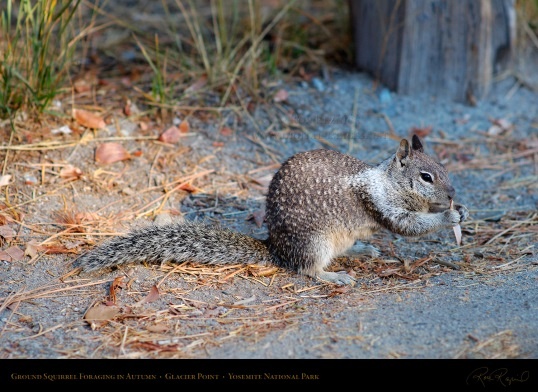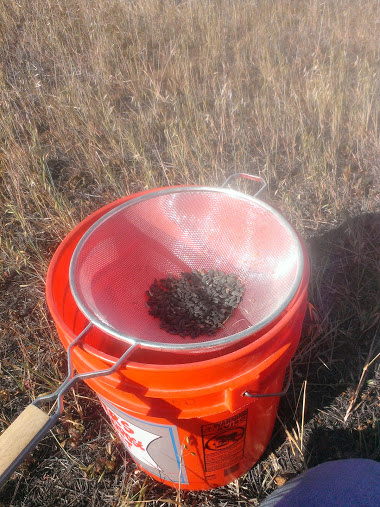(Editor’s note: This guest blog is by Katrina Stenson, an undergraduate ecology student at San Diego State University working on her thesis involving the California ground squirrel, a very common critter in SoCal. Here, she outlines her upcoming research and will keep us posted on what she discovers!)
When you’re doing your weekly grocery shopping at the supermarket or cooking a delicious dinner, you’re probably not worried about becoming someone else’s meal in the process. For the majority of animals that don’t rest easy on the top of the food chain, lunchtime has more risks than burning your tongue or spilling food on your new pants. On the contrary, for many animals, eating involves a trade-off between gaining much-needed energy from food and avoiding becoming food for someone else.


How do animals make decisions about eating that will put them in the least amount of danger? Bats and many other nocturnal mammals avoid predators by feeding at periods of the day when predators are not active (Lima and O’Keefe 2013). Many birds prefer to feed in the shade for greater concealment, despite the thermal benefits of foraging in sunlight (Carr and Lima 2014). Elk seasonally migrate to areas of higher food supply despite the higher predation risk in unfamiliar territory (Robinson and Merrill 2012). All of these animals are performing a balancing act with the risks and rewards of foraging.
The California ground squirrel is easily one of the most common and recognizable mammals in Southern California. Chances are, you’ve run across these remarkable rodents that live in the coastal chaparral of San Diego County to the arid Mojave Desert. Sharing their habitat with coyotes, raptors, and rattlesnakes, ground squirrels lead incredibly dangerous lives. They too must trade-off between the risks of predation and starvation in order to survive.
I want to know more about how California ground squirrels weigh the costs and benefits of feeding, and what factors affect their perception of risk in their environment.
To determine these things, I will measure the giving-up density of a food resource. The giving-up density will simply be the amount of sunflower seed in a feeding tray a squirrel leaves behind after a set amount of hours (Brown 1988). A squirrel will leave a feeding tray when the perceived costsof feeding outweigh the benefits, or when the situation is deemed too risky. I will place these feedingtrays in different habitats and distances from burrows to determine what situations are associated with higher riskin ground squirrels.
I will be conducting my research throughout April at Rancho Jamul Ecological Reserve in eastern San Diego County and will have results in early May. I hypothesize that squirrels will leave more seed behind in trays near bushes that are farther away from burrows, where they do not have a full view of their surroundings and no quick route of escape.
Why does this matter? Well, even if you have the opinion that ground squirrels are pesky pests that overpopulate the Californian countryside, they have big impacts on our local wildlife. As ecosystem engineers, the burrows they dig provide homes for many other animals such as rattlesnakes and endangered burrowing owls. Drought and human development change the structure of habitat where these squirrels live, which could change their risk perception and feeding behavior. These changes could impact their survival, which would have cascading impacts throughout the ecosystem.

Hopefully I’m not the only one who thinks squirrels are far too underrated for how important (and adorable) they are. From my experience in the field, I have come to appreciate the beauty of Southern California that is often driven past and ignored as commonplace. By studying the animals that have such a large impact on the environment, I am gaining an even larger reverence for the dynamic nature that exists in our own backyards.
-Katrina Stenson


